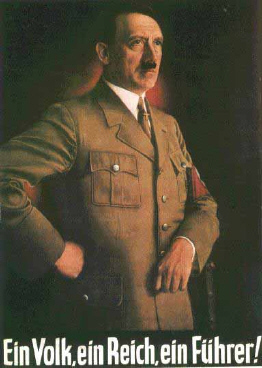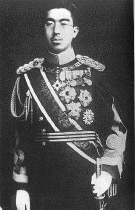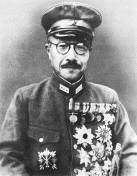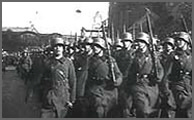Multiple Choice
Identify the
choice that best completes the statement or answers the question.
|
|
|
FAILURES OF THE WORLD WAR 1
PEACE SETTLEMENT
The
Treaty of Versailles
that ended World War I did not create a "just and secure peace." Germans saw nothing fair
in a treaty that blamed them for starting the war. Nor did they find much security in a settlement
that stripped their country of territories they had long seen as German. Similarly, the Soviets
resented the carving away of parts of Russia to create an independent Poland and the nations of
Finland, Estonia, Lithuania, and Latvia.
In addition, the peace settlement did not make the
world "safe for democracy," as Wilson had hoped. At the end of the war, new democratic
governments did emerge in many European nations, including Germany Austria, Italy, Czechoslovakia,
Bulgaria, Romania, and Greece . Most of these nations lacked democratic traditions, though, and their
newly elected leaders needed to made democracy succeed. However, the Versailles treaty did nothing
to help the war torn nations of Europe rebuild. Instead, many of the new democracies were
expected to pay off huge war debts while trying to deal with widespread hunger, homelessness, and
unemployment.
Unable to cope with these problems, several new democracies collapsed and
dictators seized power. Some of these dictators were content simply to collect taxes and keep order.
A few, however, had far grander ambitions
|
|
|
1.
|
The treaty that ended World War
I was called the Treaty of
a. | Paris | c. | Versailles | b. | World War I | d. | London |
|
|
|
2.
|
_____ resented the fact that
territory was taken away from them to create new countries after WWI.
a. | England and
France | c. | Poland and
Russia | b. | Russia and France | d. | Germany and Russia |
|
|
|
3.
|
Woodrw Wilson believed that WWI
would make the world safe for democracy. Why did democracy fail in Europe after
WWI?
a. | No new democracies were created
after the war | c. | The United States
was the only experienced democracy that fought in World War I | b. | Few of the new democracies had experience running their
countries as democracies | d. | Fascism is a better form of
government than democracy |
|
|
|
4.
|
Which statement is true about
the treaty of Versailles
a. | It put unfair burdens on Germany and
helped created an atmosphere where democracy could not succeed. | c. | It put unfair burdens on Poland and helped created an
atmosphere where democracy could not succeed. | b. | It was unfair to England and
France | d. | It treated all nations the
same. |
|
|
|
JOSEPH STALIN TRANSFORMS THE
SOVIET UNION
In Russia, hopes for democracy gave
way to civil war, resulting in the establishment of a Communist state, the Soviet Union, in 1922.
When V I. Lenin, the first
leader of the Soviet Union, died in 1924, Joseph Stalin took control of the country. Stalin,
took his name because it meant "man of steel," He was as iron-willed as his name
implied. Stalin focused on creating a model Communist state in the Soviet Union. In doing
so, he began an agricultural and industrial restructuring that trampled the rights of-and brought
great suffering to-his people.
In 1927, Stalin launched his massive drive to transform the
Soviet Union into a truly socialist country, which meant stamping out private enterprise, especially
private farming. He began by ordering the collectivization of Soviet agriculture-that is, the
organization of production under collective, or state, control . He forced Russia's peasants to
give up their small plots of land so that they could be combined into large state-owned farms . They
were then expected to work on the collective farms as wage earners .
Meanwhile, Stalin turned
to his second great goal, the transformation of the Soviet Union from a backward rural nation into a
great industrial power. By 1939, the Soviet Union had become the world's third largest
industrial power, surpassed in overall production by only the United States and
Germany.
The human costs of
this transformation, however, were enormous. To accomplish his ambitious goals, the "man of
steel" turned the Soviet Union into a vast police state-a state in which no one was safe from
the prying eyes and ears of government spies and secret police . Anyone even suspected of criticizing
the Soviet leader or his goals was arrested and shipped off to a forced labor camp in the frozen
wastelands of Siberia. |

Lenin and Joseph Stalin
 Stalin sent millions to
forced labor camps for criticizing the communist state. Stalin sent millions to
forced labor camps for criticizing the communist state. | | |
|
|
|
5.
|
Joseph Stalin was
a
a. | democrat | c. | democratic communist | b. | democratic socialist | d. | communist dictator |
|
|
|
6.
|
Stalin wanted to turn the
Soviet Union into
a. | a communist industrial world
power | c. | capitalist
state | b. | democratic republic | d. | capitalist industrial world
power |
|
|
|
7.
|
Which statement is true about
Stalin?
a. | he was a communist who was concerned
about the civil liberties and freedom of the ordinary Soviet citizen | c. | he was a socialist who only cared about industrialization,
reform of the farm system and protection of private property | b. | he was a brutal communist dictator who was responsible for
the deaths of millions of his own people. | d. | he was none of these |
|
|
|
THE RISE OF FASCISM IN
ITALY

Benito Mussolini
 | While Stalin was consolidating his power in the Soviet Union, Benito Mussolini
was establishing a totalitarian regime in Italy. In 1919, Mussolini had begun his rise to
power by advertising for war veterans to fight the politicians, who, in Mussolini's view, were
destroying Italy. This mobilization was the beginning of fascism, a new political movement that
consisted of a strong, centralized government headed by a powerful dictator. Fascism was rooted in
the nationalism that had reshaped Europe over the past century. Mussolini dreamed of making Italy
a great power in the world.
Unlike Stalin's Communist regime, Mussolini's
Fascist state did not attempt to control farms and factories . In fact, many discontented veterans,
jobless youth, and businesspeople greatly feared the spread of communism to Italy. These people
became firm supporters of Mussolini. In 1921, Mussolini established the Fascist Party, which then won
35 seats in the Italian parliament. A year later, after Mussolini staged a march on Rome with
thousands of his black-shirted followers, the Italian king allowed him to form a new government.
Calling himself Il Duce, or "the chief," Mussolini gradually extended Fascist
control to every aspect of Italian life. Tourists marveled that Il Duce had even "made the
trains run on time ." Mussolini achieved this efficiency, however, by crushing all opposition
and by making Italy a totalitarian state. | | |
|
|
|
8.
|
Benito Mussolini was a
a. | Communist | c. | Republican leader | b. | Democratic leader | d. | Fascist leader |
|
|
|
9.
|
Benito Mussolini was elected to
power and turned Italy into _____
a. | a Communist
state | c. | a totalitarian
dictatorship | b. | a monarchy | d. | a democratic state |
|
|
|
10.
|
According to the author,
European Facism is rooted in
a. | economics | c. | extreme internationalism | b. | extreme nationalism | d. | democracy |
|
|
|
THE NAZIS TAKE OVER GERMANY
In Germany,

Adolf Hitler
“One People, One State, One
Leader”
| Hitler laid out
the basic beliefs of Nazism in his book Mein Kampf ("My Struggle"), published in two
volumes in 1925 and 1927. A type of fascism, Nazism was based on extreme nationalism . Hitler,
who had been born in Austria, dreamed of uniting all German-speaking people in a great German empire.
To this element of nationalism, Hitler added his theories about race. In his view, Germans-especially
blue-eyed, blond-haired "Aryans"-formed a "master race" that was destined to rule
the world. He claimed that the Jews were destroying German culture.
A third element of Nazism
was national expansion . Hitler believed that for Germany to thrive, it needed more lebensraum, or
living space. One of the Nazis' aims, as Hitler wrote in Mein Kampf was "to secure for the
German people the land and soil to which they are entitled on this earth," even if this could be
accomplished only by "the might of a victorious sword."
The Great Depression helped
the Nazis come to power. By 1932, some 6 million Germans were unemployed. Many of these desperate
people turned to Hitler as their last hope. In elections held in March 1932, the Nazis won more votes
than any other party, though not a majority. In January 1933, Hitler was appointed chancellor (prime
minister) .
Once in power, the Fuhrer quickly dismantled Germany's democratic Weimar
Republic. In its place he established what he called the Third Reich, or Third German Empire. Like
the first German empire (the Holy Roman Empire established by Charlemagne), and unlike the
short-lived second empire established by Bismarck in the 19th century, the Third Reich, according to
Hitler, would be a "Thousand-Year Reich." | | |
|
|
|
11.
|
What was the name of the book
in which Hitler laid out his basic ideas about government and society?
a. | Mein Kampf
| c. | Mein
Furher | b. | The Manifesto | d. | Das Capital |
|
|
|
12.
|
One of the reasons Hitler
invaded Eastern Europe and Russia is that Germany needed lebensraum. What is lebensraum?
a. | destruction of a nations
enemies | c. | revenge | b. | superiority | d. | living space |
|
|
|
13.
|
The Nazi’s used _____ to
gain win elections in Germany in 1932
a. | the
depression | c. | fear and suspicion
of the Jews | b. | hatred of the Treaty of Versailles | d. | all of these |
|
|
|
14.
|
Hitler said that he was
building the new German state on the foundation of the Holy Roman Empire established by Charlemagne, and the short-lived second empire
established by Bismarck in the 19th century. He called this empire
a. | the New Weirmar
Republic | c. | the Weirmar
Republic | b. | the Third Reich | d. | the German Republic |
|
|
|
15.
|
Hitler and Mussolini were
both
a. | Communists | c. | Anarchist’s | b. | Democratic | d. | Facists |
|
|
|
MILITARISTS GAIN CONTROL IN
JAPAN

Emporer Hirohito

General
Tojo | Halfway around the world from Germany, nationalistic military leaders in Japan
were trying to take control of their government. These leaders shared Hitler's belief in the
need for more "living
space" for a growing populationand the superiority of the Japanese race. The
militarists launched a surprise invasion of the Chinese province of Manchuria in 1931 They considered
the Chinese to be an inferior race. Within several months, Japanese troops controlled the entire
province, a resource-rich area nearly as large as Alaska which they ruled with harsh
brutality.
Japan also occupied Korea and treated the Korean people with the same contempt they
had for the Chinese
The League of Nations had been established after World War I to
prevent such aggressive acts. In this first test of its power, the League sent representatives to
Manchuria to investigate the situation . Their report condemned Japan, which simply quit the League .
Meanwhile, the success of the Manchurian invasion put the militarists firmly in control of
Japan's government. | | |
|
|
|
16.
|
Japan and Germany shared the
need for more living space and a belief in the superiority of their own race.
a. | true | c. | partly true | b. | false |
|
|
|
17.
|
What did the League of Nations
do when Japan invaded Manchuria
a. | investigated | c. | ignored Japan’s actions | b. | kicked Japan out of the
League | d. | appealed to the United States to
intervene |
|
|
|
18.
|
What was the attitude of the
Japanese toward the Chinese and Korean peoples?
a. | Japan saw Koreans and Chinese as
Asian equals | c. | Japan thought the
Chinese were inferior but not the Koreans | b. | Japan saw Koreans and Chinese as inferior to the Japanese
race. | d. | Japan thought the Koreans were inferior but not the
Chinese |
|
|
|
19.
|
After the League of Nations
condemed Japan for their invision of Manchuraia, what did Japan do?
a. | they started to withdraw their
troops from Manchuria | c. | they quit the
League of Nations | b. | they blamed the invasion on U.S. aggression | d. | they went to war against the League of
Nations |
|
|
|
AGGRESSION IN
EUROPE

German troops invade the
Rhineland
The failure
of the League of Nations to take action against Japan did not escape the notice of Europe's
dictators. In 1933, Hitler felt bold enough to pull Germany out of the League. In 1935, he began a
military buildup in violation of the Versailles treaty. A year later, he sent troops into the
Rhineland, a German region
bordering France and Belgium which was demilitarized as a result of the Versailles treaty. He also
signed the Rome- Berlin Axis Pact, which established a formal alliance between Germany and Italy. The
League did nothing to stop Hitler.

Mussolini (left) and Haile Selassie
(right)
Meanwhile,
Mussolini began building his new Roman Empire. His first target was Ethiopia, Africa's only
remaining independent country. By the fall of 1935, tens of thousands of Italian soldiers stood ready
to advance on Ethiopia. The League of Nations reacted with brave talk of "collective resistance
to all acts of unprovoked aggression."
When the invasion began, however, the
League's response was an ineffective economic boycott-little more than a slap on Italy's
wrist. By June 1936, Ethiopia had fallen . In desperation, Haile Selassie, the ousted Ethiopian emperor,
appealed to the League for assistance. Nothing was done. "It is us today," he told them.
"It will be you tomorrow."
|
|
|
20.
|
What did the Rome- Berlin Axis Pact do?
a. | made Germany and Italy
enemies | c. | made Germany and
Italy allies | b. | made Germany reject the Versailles treaty | d. | made it legal to persecute the
Jews |
|
|
|
21.
|
What area of the world did
Italy attack?
a. | Southern
Africa | c. | the
Balkans | b. | North Africa | d. | Eastern Europe |
|
|
|
22.
|
As a result of the Italian
invasion of his country, who said "It is us today," he told
them. "It will be you tomorrow."
a. | the
Jews | c. | Anwar
Sadat | b. | Mussolini | d. | Haile Selassie |
|
|
|
|
|
|
23.
|
General Franco became the
dictator of _____
a. | Russia | c. | Spain | b. | Germany | d. | Italy |
|
|
|
24.
|
Who became the Fascist dictator
of Italy?
a. | Hitler | c. | Franco | b. | Mussolini | d. | Stalin |
|